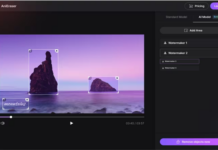Usability testing and user acceptance testing (UAT) are crucial parts of the product development lifecycle. Both involve getting feedback from real users to improve a product, but their goals and ways of doing things are slightly different. Any product development team wanting to ensure their launch goes well needs to know the difference between usability testing and UAT.
What is UI Testing?

Usability testing, also known as user interface (UI) testing, tests whether an application is or will be easy to use for the end user. It focuses on how well users can interact with the product’s interface, such as buttons, menus, text boxes, etc., and how quickly they can complete tasks. Usability tests are conducted towards the middle and end of the development process when you have implemented most of the features. They help developers find any problems that might arise when people use the app, so they can fix them before it goes live.
The goal of usability testing is to ensure that users can easily navigate through an application without having difficulty understanding how it works. Usability testers observe users interacting with a prototype or existing product and ask about their experience. Observing users and asking them questions helps developers understand what works well and what needs improvement so that they can make changes accordingly. Common usability testing methods include focus groups, surveys, interviews, A/B tests, and heuristic evaluations.
What is UAT?
User acceptance testing (UAT), or beta testing, is a technical step that doesn’t replace the breadth and depth of usability tests. It involves having real users test an app before it goes live to make sure that all of its features work correctly and meet the requirements set by developers or other stakeholders. You can use UAT services to ensure you conduct your UAT properly.
UAT focuses on whether or not an application meets its requirements rather than how easy it is for users to use it. It does not provide insight into the user experience or satisfaction levels with a product like usability tests do.
Most of the time, UAT happens after you have added all features but before an app goes live. However, some organizations choose to conduct UAT throughout different stages of development, depending on their needs. During UAT sessions, testers will go through specific scenarios set up by developers or stakeholders and watch how well each feature works in those scenarios.
UAT sessions help them find any bugs or glitches that developers need to fix before launch day. Exploratory tests, smoke tests, regression tests, compatibility tests, and security tests are all methods that are often used in UAT.
Conclusion
Usability and user acceptance testing are essential to ensuring that teams make good products. They are used for different things at different stages of the product development lifecycle. Understanding their differences is critical for success. Usability tests focus on making sure applications are easy-to-use for end users.
UAT makes sure that all features work well and meet the requirements set by developers or other stakeholders before the launch date. Usability testing and user acceptance testing are two processes that should not be seen as competing with each other because they are both necessary.


















